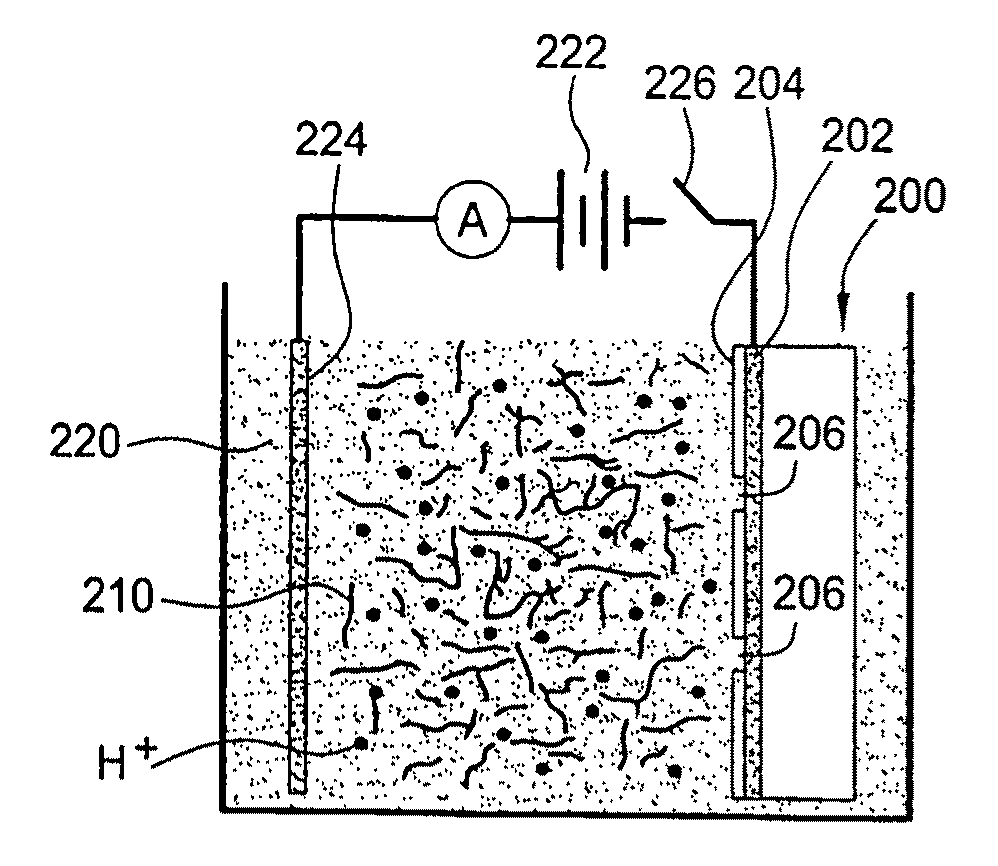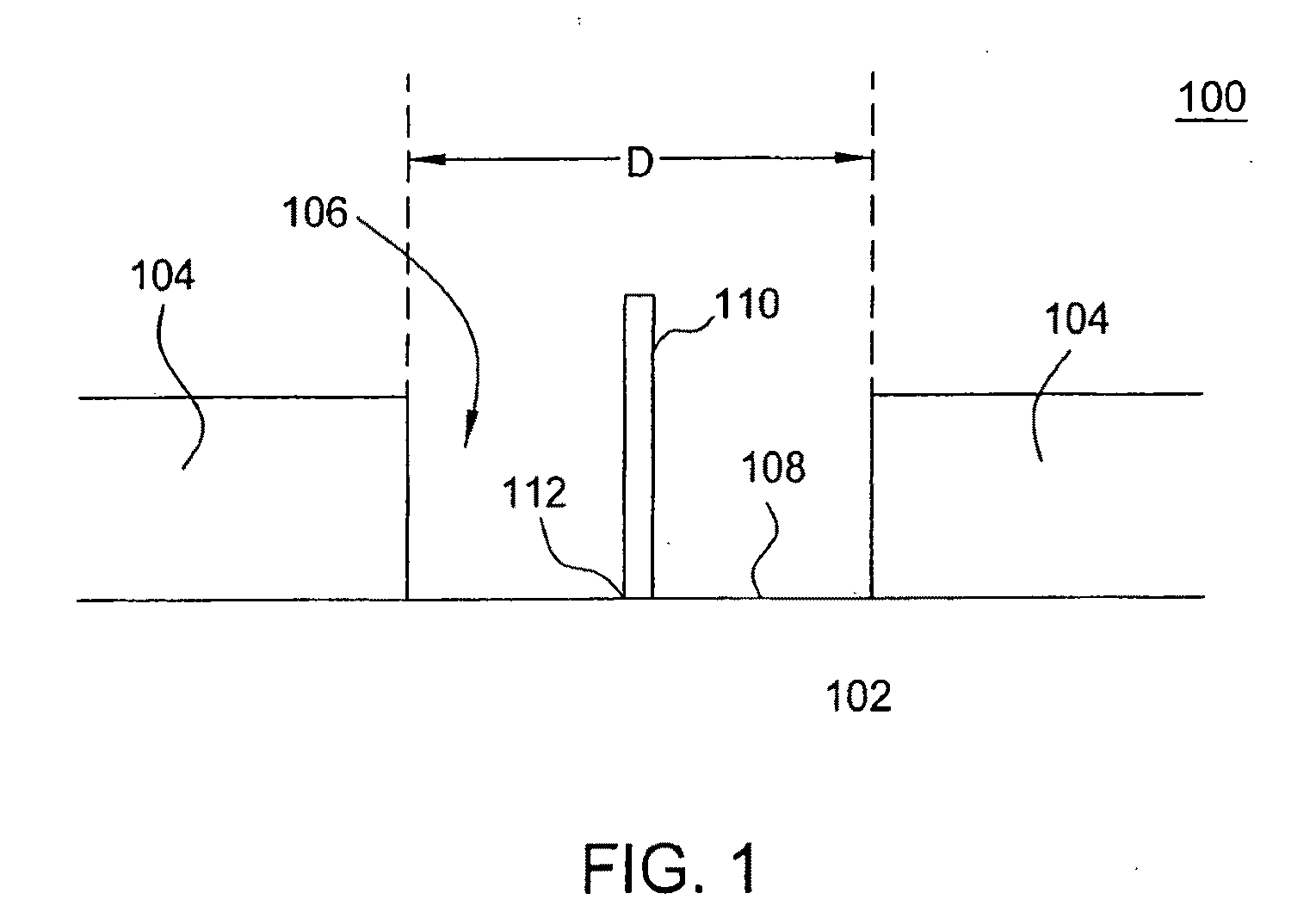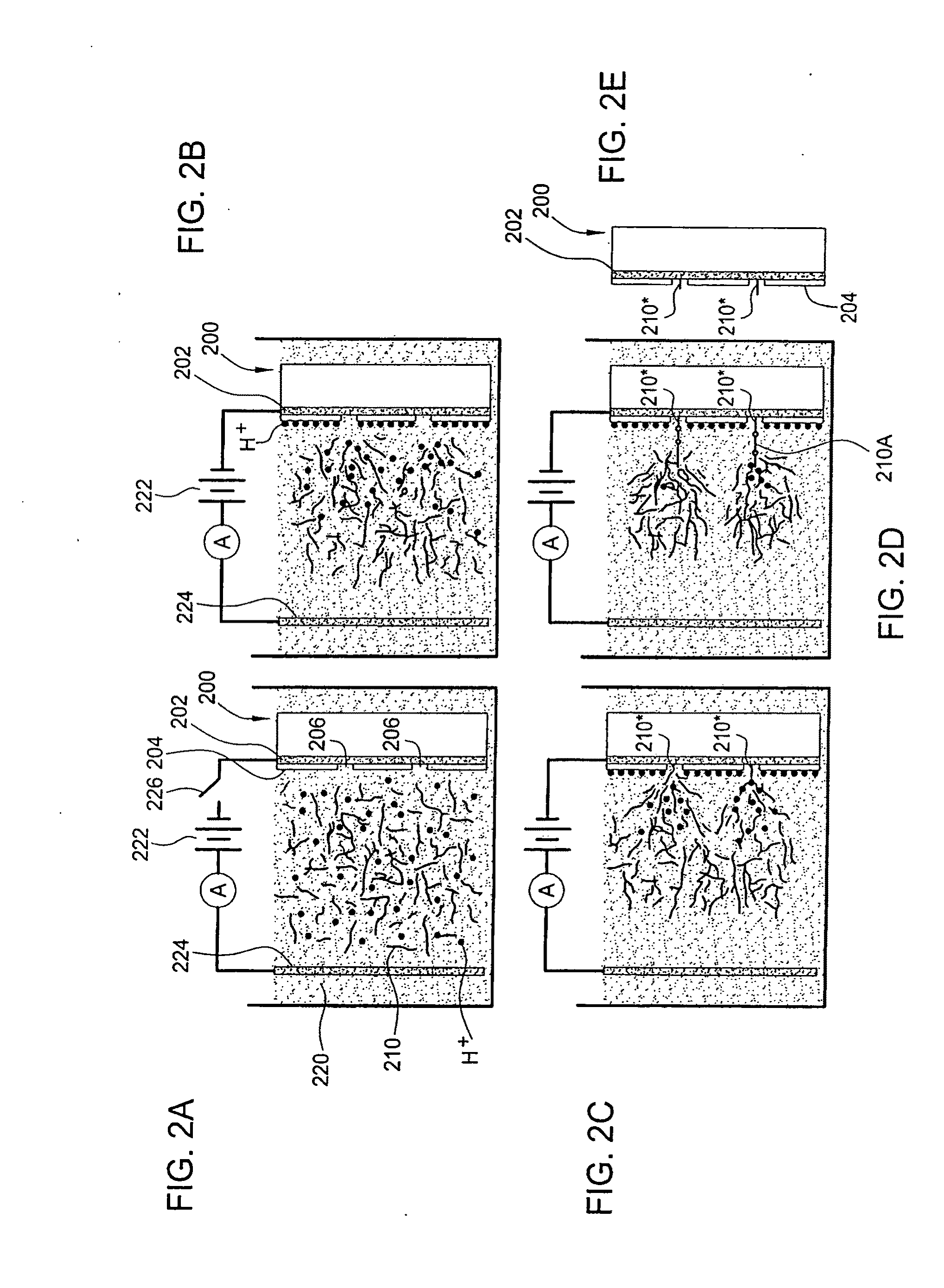System and Method for Directed Self-Assembly Technique for the Creation of Carbon Nanotube Sensors and Bio-Fuel Cells on Single Plane
a carbon nanotube and self-assembly technology, applied in the field of nanotubes, can solve the problem of controlled number(s) in the fabrication of carbon nanotube devices, and achieve the effect of improving the system and method of fabricating nanotube devices
- Summary
- Abstract
- Description
- Claims
- Application Information
AI Technical Summary
Benefits of technology
Problems solved by technology
Method used
Image
Examples
example 1
[0108]The substrates for the deposition of carbon nanotubes were 100 mm silicon wafers. Layers of silicon nitride and silicon oxide were deposited using plasma enhanced chemical vapor deposition. Photolithography was used to pattern the micro-rails in OIR620-7i / LOR 3A photoresist with a GCA Autostep stepper. A Cr / Co metal layer (20 nm Cr / 200 nm Co) was deposited using an e-beam evaporator. The metal in the unpatterned areas was “lifted-off” by dissolving the resist. An approximately 75 nm thick layer of silicon nitride was then deposited using plasma enhanced chemical vapor deposition (PECVD) followed by evaporation of about 50 nm amorphous carbon and about 5 nm silicon oxide. Six windows or apertures were patterned on each micro-rail using ZEP520A resist and a Jeol 9300FS electron-beam lithography system. Along with the windows on the micro-rails, test patterns were printed on a separate metal pad for diagnostics to help optimize the e-beam lithography and electrophoresis depositio...
PUM
| Property | Measurement | Unit |
|---|---|---|
| diameter | aaaaa | aaaaa |
| diameter | aaaaa | aaaaa |
| diameter | aaaaa | aaaaa |
Abstract
Description
Claims
Application Information
 Login to View More
Login to View More - R&D
- Intellectual Property
- Life Sciences
- Materials
- Tech Scout
- Unparalleled Data Quality
- Higher Quality Content
- 60% Fewer Hallucinations
Browse by: Latest US Patents, China's latest patents, Technical Efficacy Thesaurus, Application Domain, Technology Topic, Popular Technical Reports.
© 2025 PatSnap. All rights reserved.Legal|Privacy policy|Modern Slavery Act Transparency Statement|Sitemap|About US| Contact US: help@patsnap.com



